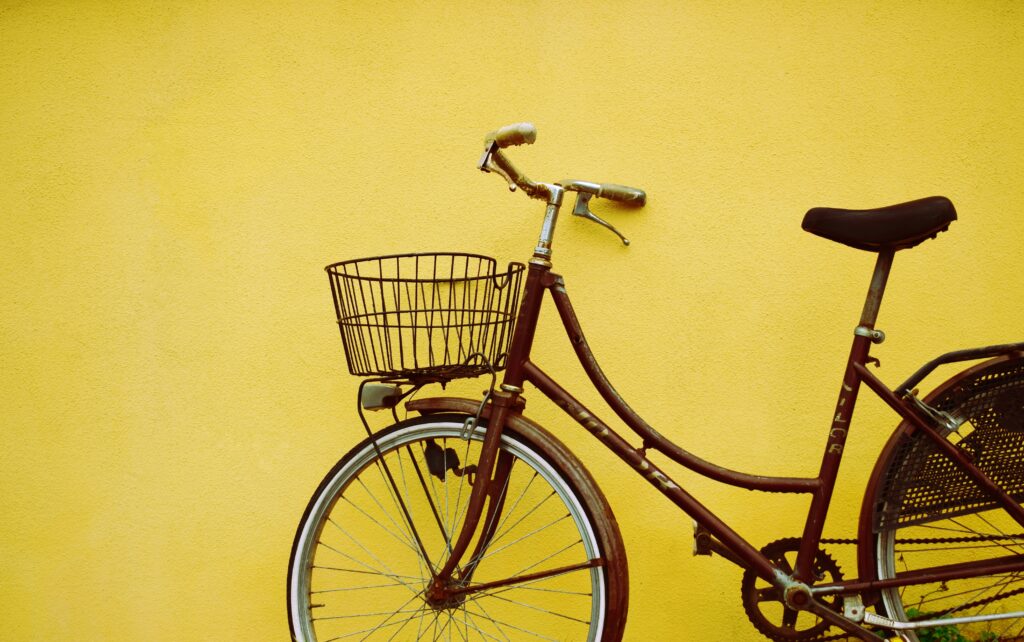Imagine cruising down the streets, feeling the wind on your face and effortlessly gliding past cars. Curiosity strikes – just how fast can an e-bike go? If you’ve ever wondered about the speed capabilities of these electric-powered wonders, you’re about to uncover the thrilling answers. Join us as we explore the exhilarating velocity that e-bikes can reach and discover the unexpected possibilities that lie ahead on your two-wheeled adventure.
Introduction to E-bikes
What is an e-bike?
An e-bike, short for electric bike, is a bicycle that is powered by an electric motor. This motor assists the rider’s pedaling, providing an extra boost of speed and making it easier to traverse various terrains. E-bikes can be a great alternative to traditional bicycles, especially for those who may have physical limitations or long commutes.
Components of an e-bike
E-bikes consist of several key components that work together to provide power and functionality. These components include the electric motor, battery, controller, sensors, and display. The electric motor is typically housed in the rear hub or the bottom bracket area of the bike frame. The battery provides the energy needed to power the motor. The controller manages the flow of electricity from the battery to the motor. Sensors detect the rider’s pedaling force and speed, providing input to the controller. The display shows important information such as speed, battery level, and other settings.
Types of e-bikes
There are several types of e-bikes designed to cater to different riding preferences and needs. Class 1 e-bikes have a motor that provides assistance only when the rider is pedaling and have a maximum assisted speed of 20 mph (32 km/h). Class 2 e-bikes have a throttle that allows the motor to propel the bike without pedaling, with a maximum speed of 20 mph (32 km/h). Class 3 e-bikes provide assistance up to 28 mph (45 km/h) but are typically equipped with a speedometer and are allowed to operate in certain areas. Speed Pedelecs can reach speeds of up to 28 mph (45 km/h), but at these speeds, they are legally classified as mopeds in most jurisdictions. Custom e-bike conversions are bikes that have been retrofitted with an electric motor kit, enabling riders to enjoy the benefits of e-bikes on their existing bicycles.
Factors Affecting E-bike Speed
Motor Power
The power output of the electric motor is one of the primary factors influencing an e-bike’s speed. Motors with higher wattage can generate more torque, allowing for faster acceleration and higher top speeds. E-bikes with more powerful motors can handle steeper inclines and carry heavier loads while maintaining a consistent speed.
Battery Capacity
The capacity of the e-bike’s battery directly affects its range and speed. Higher capacity batteries can provide more energy for the motor, allowing for longer distances and higher speeds. Additionally, a battery with a higher voltage can deliver power more efficiently, resulting in better overall performance.
Terrain
The terrain on which the e-bike is being ridden can have a significant impact on its speed. Uphill climbs, rough surfaces, and off-road trails can decrease an e-bike’s speed due to increased resistance and the demand for more power. Conversely, riding on flat terrain or downhill can allow for faster speeds as less effort is required to maintain momentum.
Weight of the Rider
The weight of the rider also plays a role in determining an e-bike’s speed. Heavier riders may experience slightly slower speeds compared to lighter riders due to the increased load on the motor. However, modern e-bike motors are designed to handle various weight ranges, so the impact on speed may be minimal in most cases.
Rider’s Pedaling
While e-bikes provide electric assistance, the rider’s pedaling still contributes to the overall speed. The more effort and force the rider applies while pedaling, the faster the e-bike can go. The combination of the motor’s power and the rider’s pedaling input leads to higher speeds and better efficiency.
Assist Modes
E-bikes often come equipped with different assist modes that allow riders to choose the level of electric assistance they desire. These modes can vary from low assistance, where riders rely more on their own pedaling power, to high assistance, where the motor provides a significant boost. The higher the assist mode, the faster the e-bike can potentially go, depending on the motor power and other factors.

Legal Speed Limits for E-bikes
Local and National Regulations
The legal speed limits for e-bikes vary depending on local and national regulations. In many countries, e-bikes are classified as bicycles as long as they meet certain criteria, such as a maximum assisted speed limit. These limits can range from 20 mph (32 km/h) for Class 1 and Class 2 e-bikes to 28 mph (45 km/h) for Class 3 e-bikes. It is important to familiarize yourself with the specific regulations in your area to ensure you are riding within the legal limits.
Speed Limit Definitions
Speed limits for e-bikes are generally defined as the maximum speed at which the motor provides assistance. This means that you can still pedal beyond the assisted speed limit, but you won’t receive any additional assistance from the motor. It is essential to understand and adhere to these speed limit definitions to ensure a safe and legal riding experience.
Average Speed Range of E-bikes
Class 1 e-bikes
Class 1 e-bikes, which provide assistance only when the rider is pedaling, typically have a maximum assisted speed of 20 mph (32 km/h). The average speed range for Class 1 e-bikes can vary depending on factors such as terrain, rider input, and motor power. Generally, riders can expect to maintain speeds between 15 to 20 mph (24 to 32 km/h) on flat terrain, with the ability to reach higher speeds on downhill sections.
Class 2 e-bikes
Class 2 e-bikes, which have a throttle that allows the motor to propel the bike without pedaling, also have a maximum speed of 20 mph (32 km/h). These e-bikes offer similar average speed ranges as Class 1 e-bikes since the maximum assisted speed is the same. However, riders can rely more on the throttle without pedaling, making it easier to maintain speeds throughout the ride.
Class 3 e-bikes
Class 3 e-bikes, also known as speed pedelecs, have a maximum assisted speed of 28 mph (45 km/h). The average speed range for Class 3 e-bikes is typically higher compared to Class 1 and Class 2 e-bikes. Riders can maintain speeds between 20 to 28 mph (32 to 45 km/h) on flat terrain, allowing for faster commuting and longer distances covered within a shorter amount of time.
Speed Pedelecs
Speed Pedelecs, as the name suggests, are e-bikes designed for higher speeds. These e-bikes can reach speeds of up to 28 mph (45 km/h), but it’s important to note that they are legally classified as mopeds in many jurisdictions. The average speed range for Speed Pedelecs is similar to Class 3 e-bikes, allowing riders to travel faster and cover more ground compared to lower-speed e-bike models.
Custom E-bike Conversions
With custom e-bike conversions, the speed range can vary significantly depending on the components used and the specifications of the conversion kit. The average speed range for custom e-bike conversions can be similar to Class 1, Class 2, or Class 3 e-bikes, depending on the chosen motor power and the level of electric assistance desired. Custom e-bike conversions offer flexibility and customization options for riders who want to convert their existing bicycles into e-bikes.

Top E-bike Speed Records
Straight-line Speed Records
E-bike speed records continue to be broken around the world, showcasing the potential for impressive speeds on these electric-powered bicycles. Straight-line speed records aim to determine the maximum speed attainable by an e-bike in a controlled setting. Currently, the top straight-line e-bike speed record stands at over 183 mph (295 km/h), achieved using a specially designed e-bike with a powerful electric motor and aerodynamic features.
Record-Breaking E-bike Speed Events
E-bike speed events and races are conducted to test the limits of e-bikes and showcase their capabilities. These events often have different categories based on the type of e-bike, allowing riders to compete in a fair and controlled environment. E-bike speed events provide an opportunity for riders to push their electric-powered bicycles to the limit and inspire innovation within the industry.
Safety Considerations
Safety Gear
When riding an e-bike, safety should be a top priority. Wearing appropriate safety gear such as a helmet, reflective clothing, and protective pads can help protect against potential injuries. As the speed of an e-bike increases, the risk of accidents and injuries also increases. It is important to choose safety gear that meets the necessary standards and provides adequate protection.
Braking Distance
As e-bikes travel at higher speeds, the braking distance increases compared to traditional bicycles. Riders should familiarize themselves with the e-bike’s braking system and practice proper braking techniques to ensure they have enough time and distance to stop safely. It is advisable to maintain a safe distance from other vehicles and objects to account for potential emergencies or sudden stops.
Handling High Speeds
Riding an e-bike at high speeds requires additional skills and caution. Riders should be comfortable and confident with their e-bike’s handling characteristics and have experience riding at faster speeds. It is important to practice safe maneuvers, use proper signaling, and be aware of the traffic and road conditions at all times. Taking the time to gradually increase speed and build confidence can help ensure a safe and enjoyable riding experience.

Increasing E-bike Speed
Upgrading Motor and Battery
One way to increase the speed of an e-bike is by upgrading the motor and battery. Motors with higher wattage and batteries with greater capacity can provide additional power and energy, resulting in faster acceleration and higher top speeds. Upgrading these components should be done carefully, considering factors such as compatibility, weight distribution, and legal limitations.
Reducing Weight
Reducing the weight of an e-bike can also improve its speed. Lighter e-bikes require less power to propel forward and can achieve higher speeds more easily. This can be achieved by using lighter materials for the frame, components, and accessories. However, it is essential to strike a balance between weight reduction and structural integrity to ensure the e-bike remains safe and durable.
Aerodynamic Modifications
Making aerodynamic modifications to an e-bike can also help increase its speed. Streamlining the shape of the frame, handlebars, and other components can reduce wind resistance, allowing the e-bike to move through the air more efficiently. This can be achieved through the use of fairings, narrower handlebars, and careful positioning of accessories. However, it is important to consider the impact on handling and maneuverability when making such modifications.
Conclusion
The speed of an e-bike depends on various factors such as motor power, battery capacity, terrain, rider’s weight and pedaling, and assist modes. Understanding the legal speed limits and safety considerations is crucial for a safe and enjoyable riding experience. Whether you’re considering purchasing an off-the-shelf e-bike or looking to customize your own, there are ways to increase the speed with upgrades and modifications, keeping in mind the legal limitations and safety implications. E-bikes continue to evolve, offering riders an efficient and sustainable mode of transportation with enjoyable speeds for commuting, recreational rides, or even breaking speed records.

